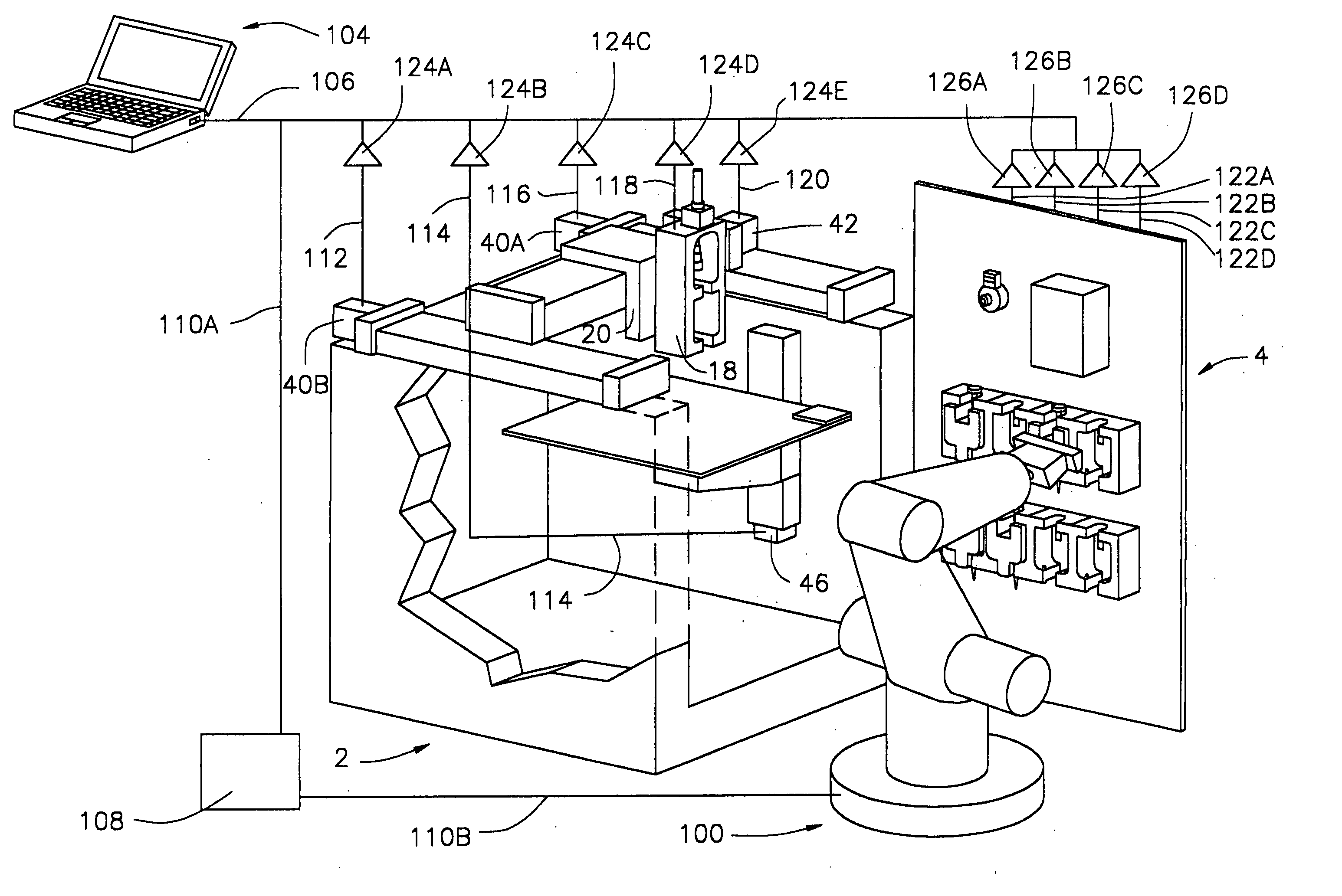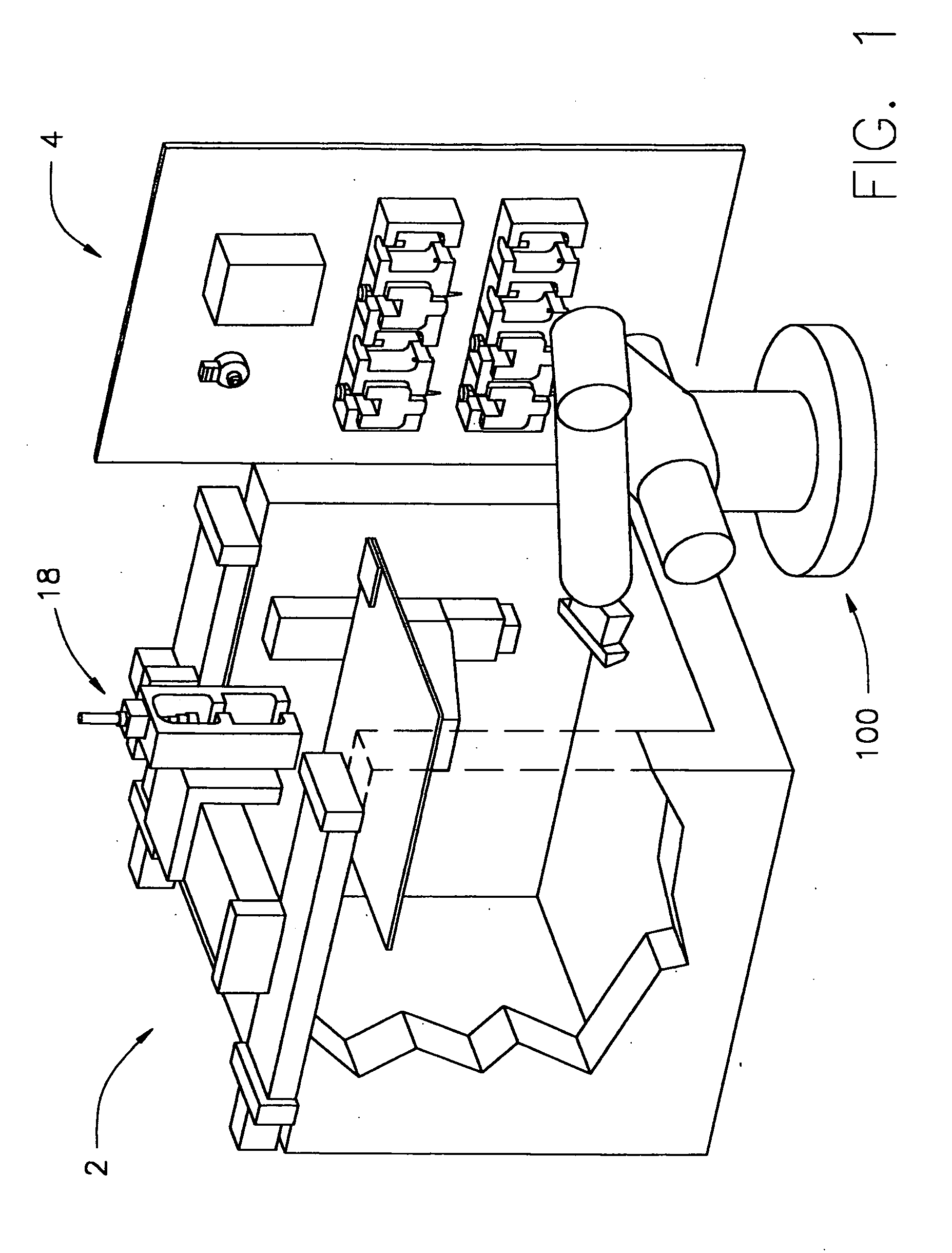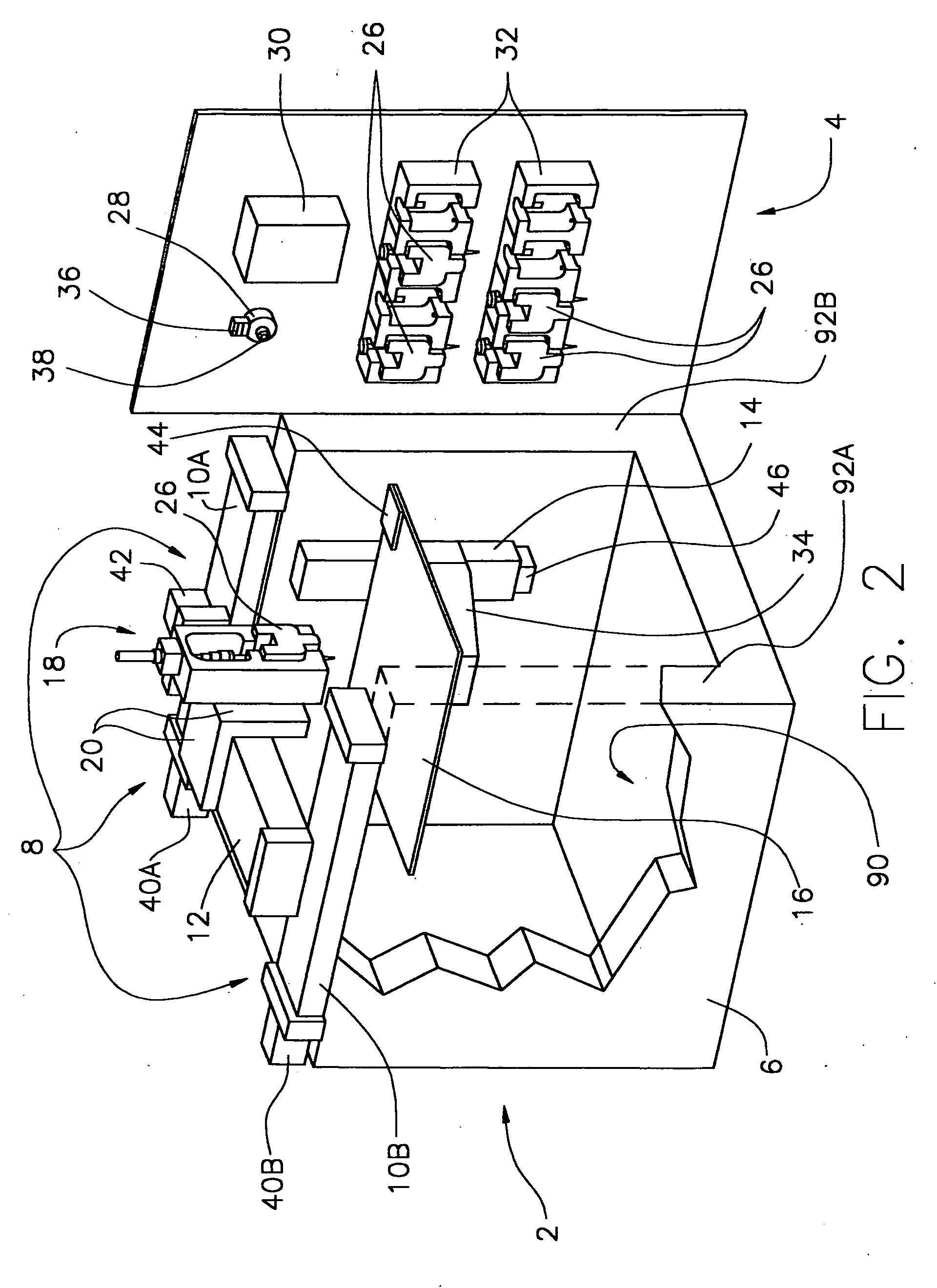Modular fabrication systems and methods
- Summary
- Abstract
- Description
- Claims
- Application Information
AI Technical Summary
Benefits of technology
Problems solved by technology
Method used
Image
Examples
example 1
Direct Freeform Fabrication of Living Pre-Cell-Seeded Alginate Hydrogel Implants in Anatomic Shapes
[0150] Articular chondrocytes were isolated from cartilage from the femeropatellar groove of 1-2 week old calves by collagenase digestion (Genes et al., “Effect of Substrate Mechanics on Chondrocyte Adhesion to Modified Alginate Surfaces,”Arch. Biochem. Biophys. 422:161-167 (2004), which is hereby incorporated by reference in its entirety). Chondrocytes were suspended in 2% ultrapure low viscosity alginate in phenobarbital sodium (“PBS”) at a concentration of 50 million cells / mL. The suspension was vortexed and mixed with 10 mg / mL CaSO4 in PBS in a 2:1 ratio. The gel was placed in a sterile 10 mL syringe with a 22 gauge SafetyLok tapered syringe tip and loaded into a gel deposition tool.
[0151] In parallel, a computerized tomography (“CT”) scan of an ovine meniscus was converted into a stereolithography file using Microview software. The file was then imported into a custom software p...
example 2
Direct Freeform Fabrication of Spatially Heterogeneous Living Cell-Impregnated Implants
Robotic Test Platform
[0158] An open-architecture gantry robot has been designed and used in this research (Malone et al., “Freeform Fabrication of 3D Zinc-air Batteries and Functional Electro-mechanical Assemblies,”Rapid Prototyping Journal 10:58-69 (2004), which is hereby incorporated by reference in its entirety). The tool paths are generated by path planning software, which takes multiple stereo lithography files corresponding to multiple material types as input. This system has been designed to allow the printing of multiple materials within a single part. This capability is used to print multiple gels with varying cell types, chemical concentrations, cell densities, etc. The robot is capable of moving the deposition tool to a specified position with accuracy and repeatability of ±25 μm. The full specifications of this robotic system are given in Table 1.
TABLE 1Fabrication System Performa...
example 3
Direct Freeform Fabrication of Zinc-Air Batteries with Tailored Geometry and Performance
[0181] In the following discussion, a cell is defined as a device that converts the chemical potential energy between its anode and cathode materials into electrical energy by means of redox reactions: reduction (electron gain) at the cathode, oxidation (electron loss) at the anode. A battery comprises of one or more connected cells. The essential functional components of a zinc-air (“Zn-air”) cell are the anode terminal, cathode terminal, anode, separator, catalyst, electrolyte, and casing. The anode and cathode terminals are passive conductors that collect charge carriers and allow connection to external loads. The anode (zinc in this case) is one of the two key reactants in the cell. The other key reactant, oxygen, is derived directly from the atmosphere. The separator provides electrical insulation between the anode and cathode to prevent internal shorting, but must be permeable to electroly...
PUM
| Property | Measurement | Unit |
|---|---|---|
| Volume | aaaaa | aaaaa |
| Volume | aaaaa | aaaaa |
| Volume | aaaaa | aaaaa |
Abstract
Description
Claims
Application Information
 Login to View More
Login to View More - R&D
- Intellectual Property
- Life Sciences
- Materials
- Tech Scout
- Unparalleled Data Quality
- Higher Quality Content
- 60% Fewer Hallucinations
Browse by: Latest US Patents, China's latest patents, Technical Efficacy Thesaurus, Application Domain, Technology Topic, Popular Technical Reports.
© 2025 PatSnap. All rights reserved.Legal|Privacy policy|Modern Slavery Act Transparency Statement|Sitemap|About US| Contact US: help@patsnap.com



